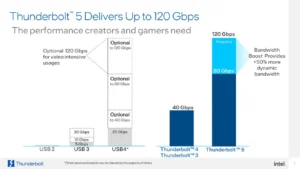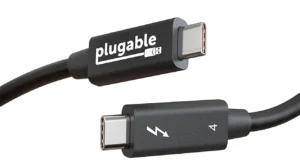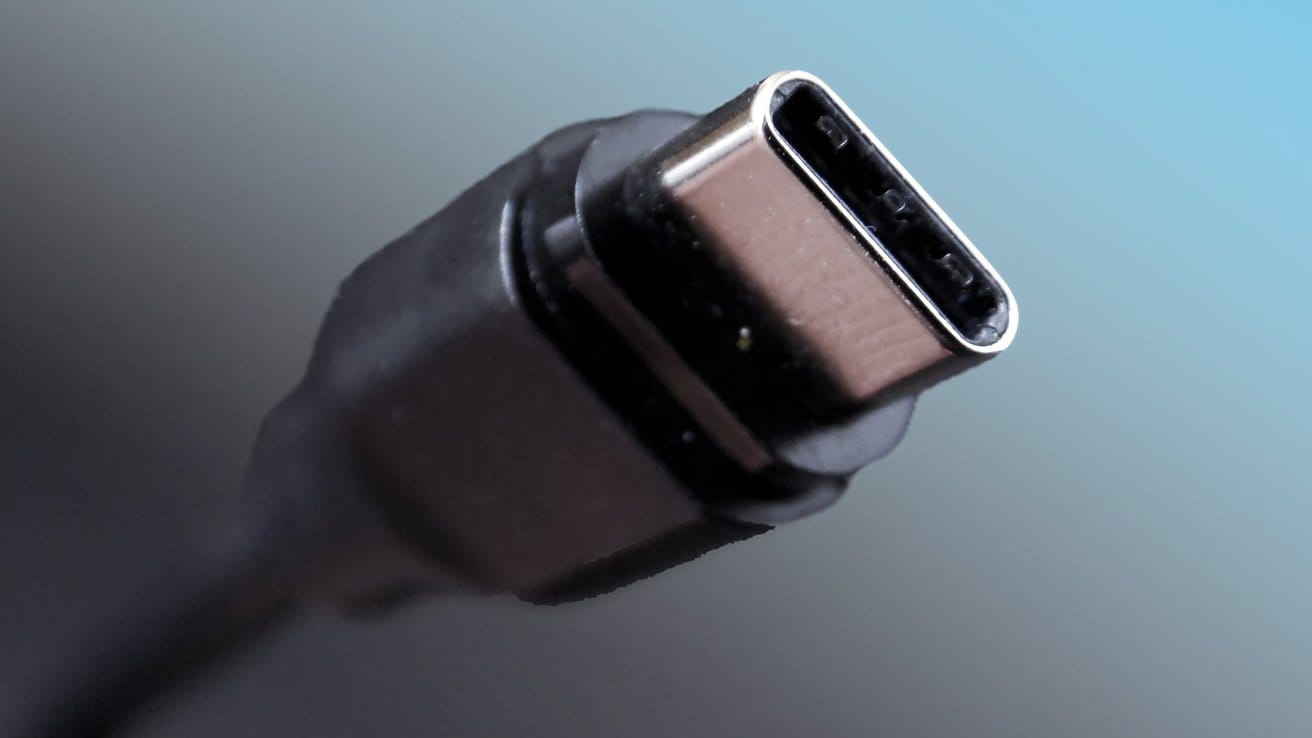Unlock the Future of Connectivity: Thunderbolt 5 vs Thunderbolt 4 Explained
Unlock the Future of Connectivity. The tech world is buzzing with excitement over the launch of Thunderbolt 5, and Apple is at the forefront of this innovation, incorporating it into its latest Mac models. With this upgrade, users can expect significant improvements in data transfer speeds, video capabilities, and power delivery. If you’re curious about what sets Thunderbolt 5 apart from its predecessor, Thunderbolt 4, this comprehensive guide will break down everything you need to know about these two groundbreaking technologies.
What is Thunderbolt?
Before diving into the specifics, let’s clarify what Thunderbolt is. Thunderbolt is a connectivity standard that combines data, video, and power delivery into a single cable, typically using the USB Type-C connector. This technology has become synonymous with high-performance computing, especially for Apple users, due to its widespread adoption in Macs and iPads.
Unlock the Future of Connectivity
Thunderbolt 5 Has Arrived

Thunderbolt 5 was officially unveiled by Intel in September 2023, following a preview of its capabilities in October 2022. With its rollout in 2024, Thunderbolt 5 promises to enhance the connectivity experience, particularly for creative professionals and gamers who demand high-speed transfers and superior video quality.
Apple’s recent Mac updates feature Thunderbolt 5 support, indicating the company’s commitment to embracing this advanced technology. Let’s take a closer look at the key differences between Thunderbolt 4 and Thunderbolt 5.
Key Specifications: Thunderbolt 4 vs. Thunderbolt 5
| Specification | Thunderbolt 5 | Thunderbolt 4 |
|---|---|---|
| Connection Type | USB Type-C | USB Type-C |
| Bandwidth | 80 Gb/s bi-directional, 120 Gb/s asynchronous | 40 Gb/s |
| Video Capabilities | Multiple 8K or 3 x 4K at 144Hz, up to 540Hz max | 1 x 8K or 2 x 4K at 60Hz |
| Power | Up to 240W, 140W mandatory support | Up to 100W, 100W mandatory support |
Enhanced Bandwidth

One of the most significant upgrades with Thunderbolt 5 is its bandwidth. While Thunderbolt 4 provides a robust 40 Gb/s, Thunderbolt 5 effectively doubles this capacity with up to 80 Gb/s bi-directional bandwidth. This means users can experience faster file transfers, making it particularly appealing for content creators who frequently work with large files.
In asynchronous mode, Thunderbolt 5 can reach a remarkable 120 Gb/s. This unique feature allows for optimal performance during tasks that require heavy data loads in one direction while still supporting standard data transfer in the other, enhancing video streaming capabilities and other applications.
Superior Video Capabilities

The advancements in video capabilities are another standout feature of Thunderbolt 5. While Thunderbolt 4 can support two 4K displays or a single 8K display, Thunderbolt 5 takes it a step further. With the added bandwidth, users can run multiple 8K displays simultaneously or even three 4K displays at an impressive 144Hz refresh rate. This improvement is a game-changer for gamers and professionals in video editing and graphic design, providing a smoother and more immersive visual experience.
Increased Power Delivery

Power delivery has also seen a notable enhancement. Thunderbolt 4 supports up to 100W of power delivery, suitable for charging devices like laptops. However, Thunderbolt 5 raises the bar significantly, allowing for up to 240W through a single cable. This increase not only enables faster charging for larger devices but also supports more power-hungry peripherals.
Compatibility and Backward Support
One of the most reassuring aspects of Thunderbolt technology is its backward compatibility. Thunderbolt 5 will seamlessly work with Thunderbolt 4 devices, ensuring users can continue utilizing their existing hardware without sacrificing performance. However, it’s essential to note that while Thunderbolt 5 devices will support Thunderbolt 4 standards, users won’t experience the same bandwidth benefits when connecting Thunderbolt 4 devices.
Additionally, Thunderbolt 5 retains compatibility with USB4 and DisplayPort 2.1, ensuring a broad range of devices can connect without issues.
The Cable Conundrum

As with any new technology, users need to be aware of cable compatibility. Thunderbolt 5 will work with existing passive cables used for Thunderbolt 4, typically up to 3.3 feet in length. However, there may be discrepancies in labeling. Users must look for the distinctive lightning bolt symbol and the accompanying number to ensure they are using the correct cable for optimal performance.
Conclusion: A Leap Forward in Connectivity
Thunderbolt 5 represents a significant leap forward in connectivity technology, offering enhanced bandwidth, superior video capabilities, and increased power delivery. As Apple continues to adopt this new standard, users can expect to benefit from these improvements in their daily computing tasks.
Unlock the Future of Connectivity
With its introduction into the latest Mac models, Thunderbolt 5 not only solidifies Apple’s commitment to innovation but also sets the stage for future developments in high-performance computing. Whether you’re a creative professional, a gamer, or someone who simply demands the best from their technology, Thunderbolt 5 is poised to unlock new possibilities and elevate your digital experience. Embrace the future of connectivity today!
Unlock the Future of Connectivity
Unlock the Future of Connectivity
Unlock the Future of Connectivity
